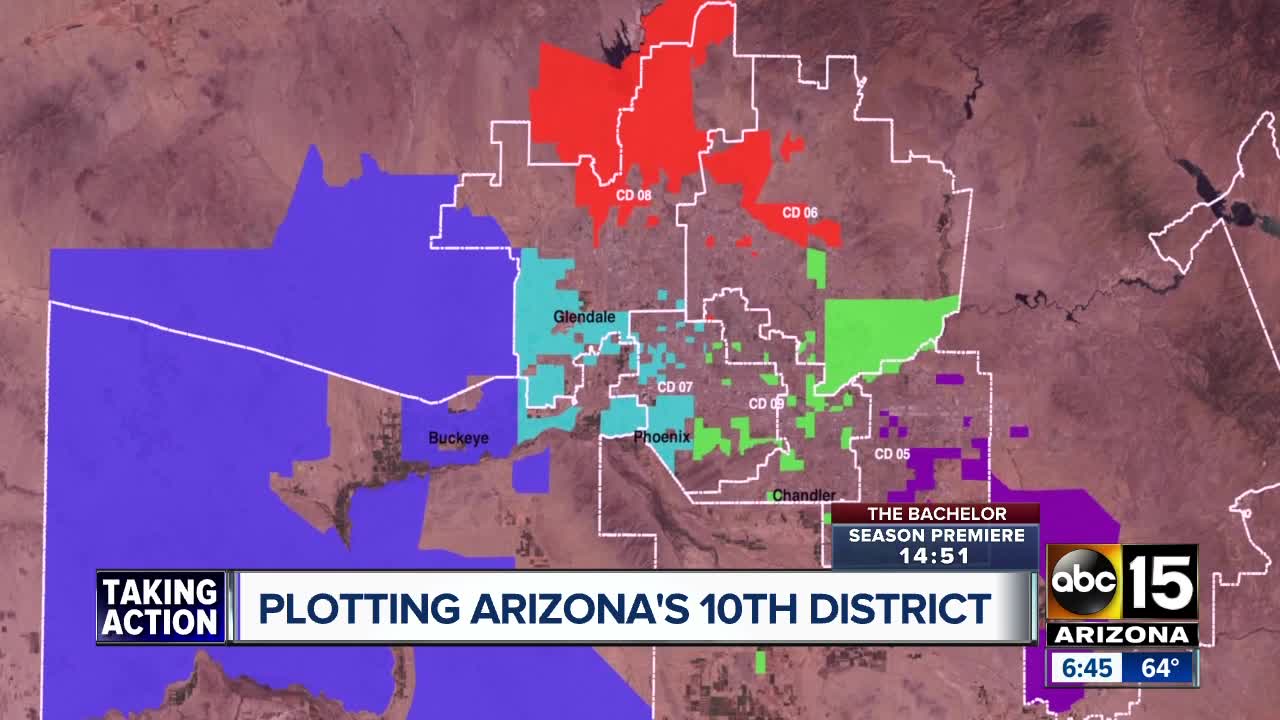Arizona is the third fastest growing state in the nation behind Idaho and Florida. According to the most recent census estimates released last week, the state took in more than 120,000 residents, giving it a growth rate of 1.7% in just the past year. In fact, since the last census was taken in 2010, Arizona’s population has increased almost 900,000 people.
This year, 2020, is a census year. Along with counting the population, the country’s 435 congressional districts will be reapportioned. Due to a law passed by congress 100 years ago, the country cannot have more than 435 congressional districts, that means that some states will gain districts and some states will lose districts based upon their 2020 population counts.

Pending a disastrous census count, Arizona is all but certain to gain a congressional district next year. This will increase the state’s representation in the U.S. House from 9 to 10.
Arizona’s Independent Redistricting Commission is charged with drawing these new lines, which will take effect for the year 2022. Much of the political drama in the state next year will be centered around the commission and how congressional and legislative districts are drawn.
What we know
1. The Phoenix metro is growing quickly. The two counties that make up the metro, Maricopa and Pinal, collectively make up 85% of the growth the state has seen in the past 10 years.
2. The metro is expanding in nearly every direction. Suburban and exurban sprawl is occurring on the western, northern, and southeastern edges of the metro. There is also substantial infill growth occurring just southwest of downtown.
3. This growth is not even. Congressional District 7 in Central Phoenix (Ruben Gallego – D) and Congressional District 5 in the East Valley (Andy Biggs – R) have both experienced a surge in population of over 130,000 new residents since 2010 while District 6 in Scottsdale (Schweikert – R) has only increased by 73,000.

Where could a 10th district go
An analysis done by ABC15 on the fastest growing census tracts surrounding the Phoenix Metro area found five distinct regional clusters that represent areas in which a new district could be drawn. The present districts were then overlaid on top of these regions to show which regions are affecting which districts the most. The area of the county that has had the most growth in the most concentrated area is in the West Valley, including the communities of Glendale, Goodyear, Buckeye, and Surprise. One interesting aspect of this region of the Valley is that the district could have very different electoral outcomes based upon how the boundaries are drawn.
Republicans will want a district that centers on the area between the Loop 101 and Loop 303 freeways. This scenario has a district that could possibly extend all the way to the California border, or move north picking up exurban communities as far north as Wickenburg. Democrats will want a district that picks up neighborhoods closer to downtown Phoenix and possibly centers around the new Loop 202 South Mountain extension.
One major factor that will have an influence on how the congressional district is drawn is the 2020 Presidential election. Voter registration numbers and the results of the election are a major part of the competitive formula that the redistricting commission will utilize when the districts are ultimate drawn.
So as political operatives of all stripes like to say, turnout will be key.

Maricopa Precinct by Precinct Election Results for 2018 – Sinema in Blue, McSally in Red



